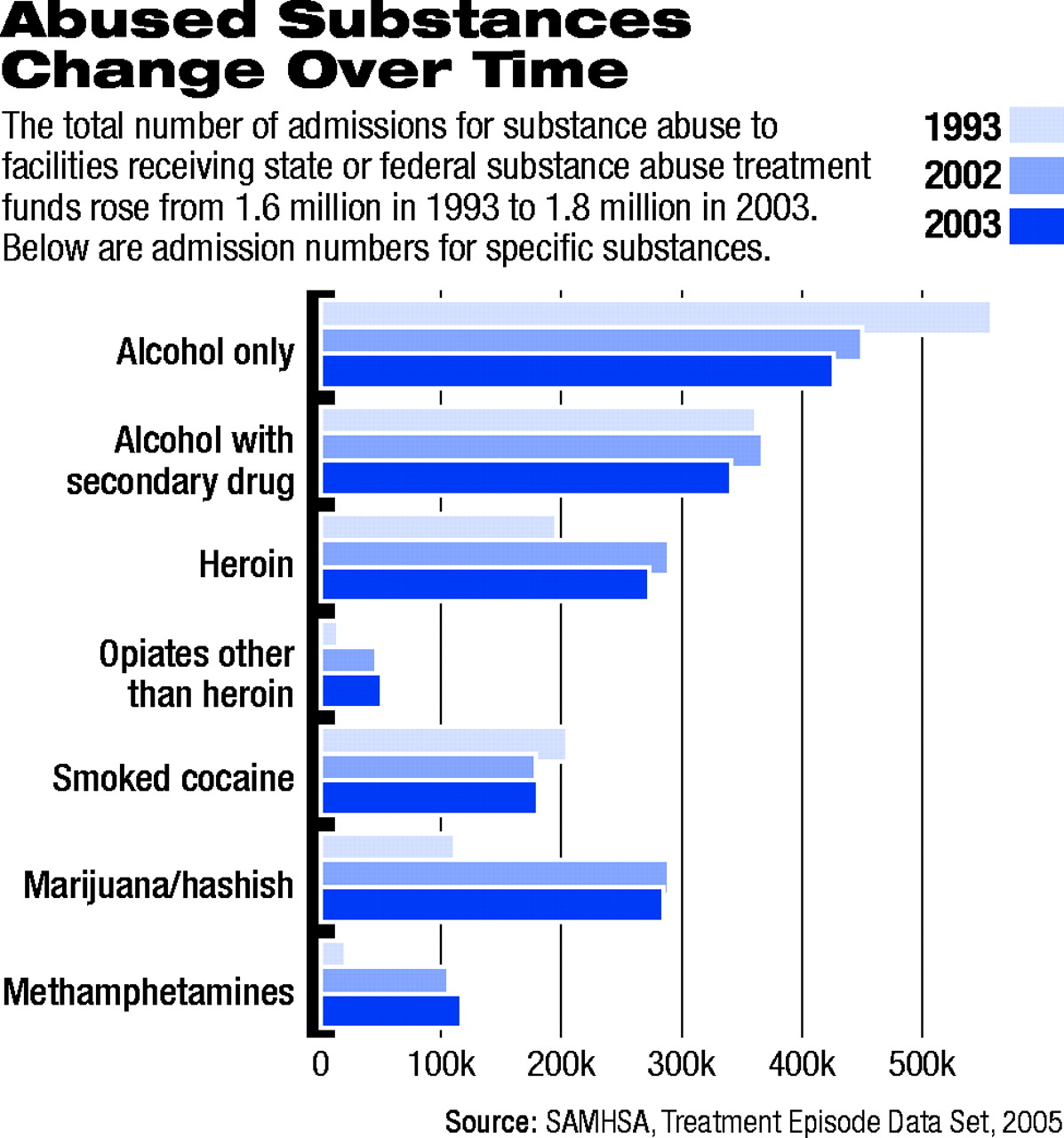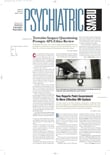Admissions to substance abuse treatment facilities for disorders related to the use of methamphetamines and narcotic pain medications rose in 2003, while those for alcohol, marijuana, and heroin use fell slightly, the Substance Abuse and Mental Health Services Administration (SAMHSA) reported.
The number of treatment admissions rose in the decade ending in 2003 from about 1.6 million in 1993 to 1.8 million in 2003, according to the highlights from Treatment Episode Data Sets, although that total represents a drop from the peak of 1.9 million admissions logged in 2002. The data cover annual admissions to drug and alcohol abuse treatment in facilities reporting to individual state administrative data systems.
Methamphetamine admissions rose about 10 percent, from 105,754 in 2002 to 116,604 in 2003. By comparison, there were only 20,776 methamphetamine admissions in 1993. Admissions for opiate abuse (including nonprescription methadone) rose 12 percent in the same period, increasing from 45,927 in 2002 to 51,071 in 2003. There were just 14,143 such admissions in 1993.
“There hasn't been a whole lot of change in 10 years despite increased research on using medications to treat substance abuse.”
“The alarming growth of methamphetamine use and, in part, its popularity can be explained by the drug's wide availability, ease of production, low cost, and highly addictive nature,” said SAMHSA Administrator Charles Curie, M.A., in a statement accompanying release of the data.
The data are for admissions, not individuals, and cover only facilities receiving state or federal substance abuse treatment funds.
The general decline in substance abuse admissions from 2002 to 2003 resulted mainly from about 50,000 fewer persons entering treatment for alcohol abuse. Heroin-related admissions fell by about 17,000, while those for cocaine and marijuana each rose by about 5,000.
“Any decline [in treatment admissions] is of concern because only a small percentage of patients who need treatment get it,” said Marianne Guschwan, M.D., a clinical assistant professor of psychiatry at New York University School of Medicine and past chair of APA's Corresponding Committee on Treatment Services for Patients With Addictive Disorders.
The number of admissions may well be driven by insurance status, even though the study data are drawn from government-funded treatment programs, she said.
SAMHSA's data do not mention payers, but do record that only 29 percent of patients over age 16 admitted for substance abuse treatment were employed, 31 percent were unemployed, and 40 percent were listed as not in the labor force.
When viewed as a primary substance of abuse, alcohol accounted for 42 percent of treatment admissions, but 44 percent of those alcohol-abuse patients reported abusing another drug as well.
Overall, men accounted for 70 percent of substance abuse admissions. About 59 percent of admissions were white, 24 percent black, and 13 percent Hispanic. Methamphetamine and opiate users were more evenly divided between men and women—just over half were male. In addition, 73 percent of methamphetamine users in treatment were white, and only 2.6 percent were black.
Nationally, 23.2 percent of admissions (426,720) were due to alcohol abuse alone, another 18.5 percent (341,278) to alcohol and a secondary drug, 2.8 percent (51,071) to nonheroin opiates, and 6.3 percent (116,604) to methamphetamine use.
There were, however, noticeable regional differences. For instance, in California alcohol abuse alone accounted for less than 10 percent of admissions (half the overall U.S. rate), while methamphetamines accounted for more than 30 percent (almost five times the national rate). In five other states—Arkansas, Idaho, Nevada, Oklahoma, and Utah—alcohol admissions were close to the national average, but methamphetamine admissions accounted for over 20 percent of all substance abuse admissions—three times the national rate.
About 36 percent of these admissions arrived at treatment as referrals from the criminal justice system, including more than half of all admissions for marijuana (57 percent) and methamphetamine/amphetamine (51 percent) abuse.
Sixty-one percent of admissions went to ambulatory care, 22 percent to detoxification, and 17 percent to residential treatment.
“We have to figure out why there has been such a slow expansion of care for these patients,” said Guschwan. “There hasn't been a whole lot of change in 10 years despite increased research on using medications to treat substance abuse.”
The “Treatment Episode Data Set Highlights–2003” are posted at<wwwdasis.samhsa.gov/teds03/2003_teds_highlights.pdf>.▪

